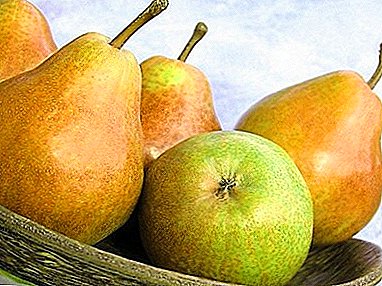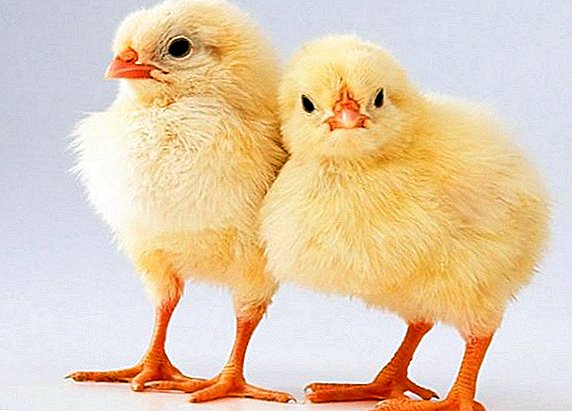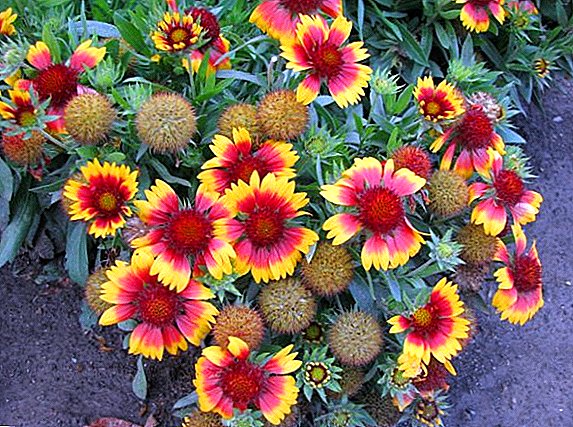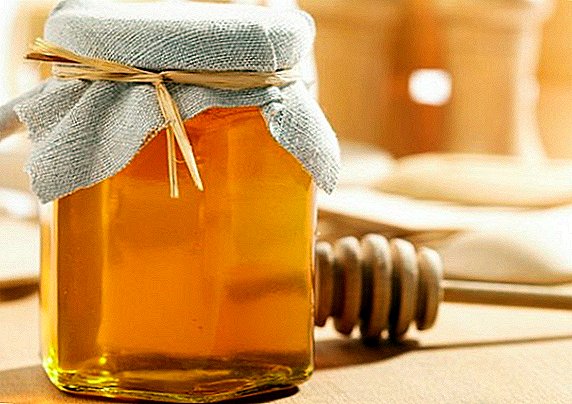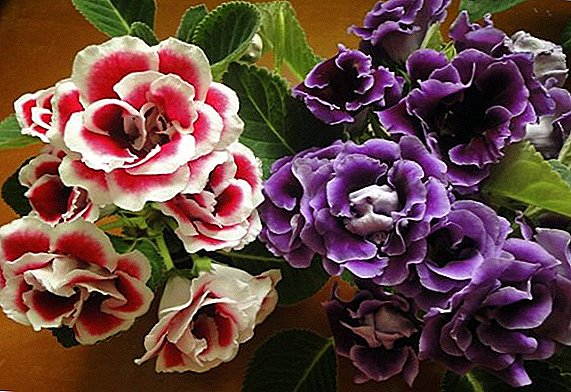 Gloxinia is one of the most popular indoor plants in the world. The popularity she found, first of all, because of her gorgeous bloom.
Gloxinia is one of the most popular indoor plants in the world. The popularity she found, first of all, because of her gorgeous bloom.
Despite the fact that the flower is non-capricious and does not require special conditions, care should be taken to it, even after it has blossomed.
Gloxinia flowering time
Gloxinia is characterized by lush and prolonged flowering, which occurs with her 3-4 years of age. Usually bloom lasts from April to August. But the first buds of the plant can begin to produce in March, and the last - in October. The active phase of flowering occurs in May - June.  The abundance of flowering is influenced by factors such as the quality of care for room culture and the conditions in which it grows (light, humidity and temperature indicators). Often, 20 buds are tied on a bush at a time, and a plant can produce hundreds of flowers in a season.
The abundance of flowering is influenced by factors such as the quality of care for room culture and the conditions in which it grows (light, humidity and temperature indicators). Often, 20 buds are tied on a bush at a time, and a plant can produce hundreds of flowers in a season.
Important! The very first buds are recommended to be removed in order to further provoke a more lush flowering.
Features of the period under review
The flowers of gloxinia grow alone, leave the axils of the leaves. In shape, they resemble bells. The corolla is formed into a tube. The color of the flowers depends on the variety. The main ones are white, pink, red and purple. Petals can be terry or smooth.  During flowering for room culture, you need to organize certain conditions. First, it is necessary to satisfy its need for light, but to shelter it from the rays of the sun falling at a right angle. It is better to place the flower on the window sill, facing north. However, monitor its condition. If there are negative changes in the appearance of the flower, for example, shoots are drawn, buds are not formed, the petals are faded, then it should be moved to the west side. When grown on southern or eastern windows, shading is required.
During flowering for room culture, you need to organize certain conditions. First, it is necessary to satisfy its need for light, but to shelter it from the rays of the sun falling at a right angle. It is better to place the flower on the window sill, facing north. However, monitor its condition. If there are negative changes in the appearance of the flower, for example, shoots are drawn, buds are not formed, the petals are faded, then it should be moved to the west side. When grown on southern or eastern windows, shading is required.
Read more about the characteristics of the care of the gloxinia at home.
Secondly, it is necessary to control the temperature indicators in the room. They should not exceed + 28 ° C. Since high temperatures adversely affect the growth of the plant, lead to rapid drying of the flowers and the absence of new buds.  Poor gloxinia tolerates temperature drops as well as drafts. Therefore, when airing you need to ensure that it does not fall under the air flow.
Poor gloxinia tolerates temperature drops as well as drafts. Therefore, when airing you need to ensure that it does not fall under the air flow.
Important! In the period of flowering should be removed in a timely manner faded flower stalks. This will allow new buds to start.Thirdly, it will be necessary to conduct high-quality watering and feeding. After all, it is during the flowering period that the plant needs the most nutrients and strength. Watering at this time should be abundant with the use of exclusively warm settled water. Also required spraying, but not the ground organs of the flower, and the space around it. Because when the air is too dry, the buds dry up and never open.
 Gloxinia is fed from April to early August 1 time in 7 days. Apply fertilizers specially designed for flowering indoor crops, choosing compounds with a predominance of potassium and phosphorus and a minimum nitrogen content. Fertilizers need to be applied to the pre-moistened soil, so as not to provoke a root burn.
Gloxinia is fed from April to early August 1 time in 7 days. Apply fertilizers specially designed for flowering indoor crops, choosing compounds with a predominance of potassium and phosphorus and a minimum nitrogen content. Fertilizers need to be applied to the pre-moistened soil, so as not to provoke a root burn.What to do and how to care for the flower after flowering?
After the first flowering, which ends in summer, gloxinia often releases the buds again, closer to autumn. The second time on the plant forms fewer flowers than the first. In addition, they bloom faster. At the end of re-flowering at Gloxinia, a period of rest. A flower should be prepared for it, namely, cut off, change the mode of watering, move to a room with a cool temperature.
Did you know? Gloxinia is named after the German botanist, Benjamin Peter Gloksin, who first described it in the 18th century. Second name - sinningia - The flower was received in 1825 from the surname of the chief botanist of the University of Bonn, William Sinning.
Pruning
 After flowering, which ended in summer (in June - July), the plant must be cut. With a sharp disinfected pruner or scissors, remove the top sheets along with the stem. On a short stalk, leave a couple of lower leaves.
After flowering, which ended in summer (in June - July), the plant must be cut. With a sharp disinfected pruner or scissors, remove the top sheets along with the stem. On a short stalk, leave a couple of lower leaves.
Next, you need to feed the plant with growth stimulants, for example, "Appin", "Zircon". When it gives the stepchildren in the axils of the remaining sheets, they must also be removed, leaving only the 2-3 strongest ones. Cropped stepsons are suitable for flower reproduction.
After pruning, gloxinia should be fed with complex mineral fertilizer. Shortly after feeding, it should bloom a second time.
After re-flowering, the ground part should die off naturally. Tuber will go to sleep and no longer feed it. From about the 20th of October, all the ground dry part should be removed, leaving a stump not exceeding 1-2 cm in height.
Fertilization
After full flowering, approximately in September, the plant should be fertilized last time in a season. At this time, you need to use mineral fertilizer, not including nitrogen. This may be, for example, potassium monophosphate. Nitrogen during this period is harmful to room culture, as it stimulates the growth and build-up of green mass, which means it will not allow the flower to go to rest.
Did you know? It is believed that zodiac signs are suitable not only for certain stones and elements, but also for indoor plants. According to the flower horoscope, Gloxinia should be grown Taurus for gaining stability in material terms.
Watering mode
To stimulate the transition of the flower "to the winter mode", it is necessary to drastically reduce the number and volume of irrigation to 1 time in 2 weeks. After trimming the ground part, scant humidification will need to be carried out for another 2-3 weeks. In the future, you will need 1 moisturizing in 2 months. Resume the old regime of watering will be needed in February, when the plant wakes up after hibernation and starts to grow.  Watering is done with warm tap water, settled for 1-2 days.
Watering is done with warm tap water, settled for 1-2 days.
We recommend to learn how to deal with gloxinia pests and diseases.
Why does gloxinia no longer bloom?
Unfortunately, some gardeners are faced with the fact that gloxinia stops blooming. This situation can be caused by several reasons that occur due to the fault of the owner of the flower:
- The excess in the soil is nitrogen. This happens if the flower is fed with fertilizers, with a composition that does not correspond to the period of its development. So, nitrogen supplements are important at the beginning of the growing season, before flowering. During the release of flowers and later they only cause harm. At this time only phosphate and potassium fertilizers are needed.
- Insufficient lighting. For planting the buds and the formation of flowers with bright petals, the plant needs sufficient lighting with diffused sunlight. The optimal duration of daylight hours is 10-12 hours. If daylight gloxinia is not enough, you need to organize additional lighting.
- Wrong pot. For gloxinia, a low and wide capacity with a diameter of 9-15 cm is necessary. In an excessively large container, the plant throws all its strength on the active development of the tuber, and the growth of the ground part and flowering suffer.
- Long absence of transplant. Gloxinia should be replanted annually. If this is not done, the soil will be depleted, which means that the plant will not be able to draw nutrients for the formation of buds.
- Landing in the wrong ground. To achieve the proper growth and development of this room culture can only be planted in nutrient, loose, moisture and air-permeable soil. It can be purchased at a specialty store or mixed personally from hardwood (1 part), peat (1 part), sand (0.5 parts), humus (1 part), sawdust. The recommended soil acidity is 5.5-6.5 pH.
- Improper conditions and care in winter. Do not neglect the recommendations on the creation of conditions and care during the period when the plant is "asleep." Recall that starting in October, it is necessary to cut off the ground part, reduce the number of waterings and move the pot to a dark room with temperature indicators + 12 ... + 15 ° С. It is strictly forbidden to apply fertilizer.
Video: Why do not bloom gloxinia
So, in order to gloxinia annually pleased with bright, lush and long flowering, it needs some care, as well as the creation of conditions for winter sleep.




